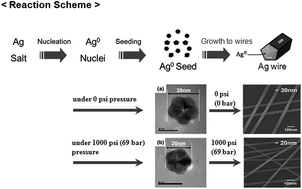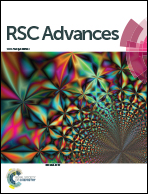Synthesis and optoelectronic characteristics of 20 nm diameter silver nanowires for highly transparent electrode films
Abstract
We demonstrate the polyol synthesis of ultrathin Ag nanowires with diameters of 20 nm and an aspect ratio as high as ∼1000 under high-pressure conditions. The increase in pressure increases density and enhances solubility, making the reactive solution rapidly reach super-saturation and increase the nucleation rate to effect a near-instantaneous formation of Ag nuclei. Clearly, the particle size was small at high pressure and an increase in pressure promoted the formation of small-size Ag seed-particles and small diameter wires. As a result, the Ag nanostructures in this study were initially formed as Ag seed particles with a diameter of 20 nm and subsequently grew into well-defined Ag nanowires with a uniform and narrow diameter distribution in the range of 16–22 nm, with a long dimension of up to 20 μm. Fabrication of random networks of the 20 nm diameter Ag nanowires synthesized lead to the fabrication of flexible transparent electrodes with excellent optoelectronic performance, with a sheet resistance of 30 Ω sq−1 and 94% transmittance with a very low haze value of ≤1.0%, making them suitable for electronic display applications.


 Please wait while we load your content...
Please wait while we load your content...